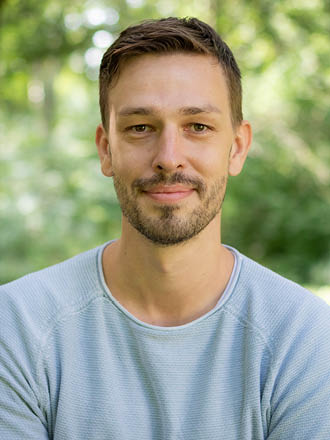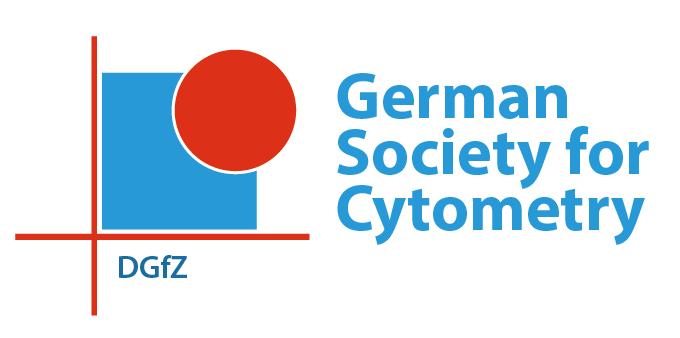Imaging & Cytometry Session
Friday, 13.09.2024, 10:00 am
Chairs: Anja Hauser, Raluca Niesner & Oliver Otto

Fabian Coscia
Max Delbrück Center for Molecular Medicine
Spatial tissue proteomics to assess health and disease
Formalin-fixed and paraffin-embedded (FFPE) tissues represent an invaluable resource for studying molecular mechanisms underlying diseases. The long archival times of FFPE tissue and the fact that proteins are largely stable therein make them ideal analytes for global mass spectrometry-based proteomics approaches for biomarker and drug target discovery. Classical approaches have provided “averaged” descriptions of the disease related proteome and fail to characterize the critical disease promoting cell populations within the complex tissue environment. To address this, we have recently co-developed Deep Visual Proteomics (DVP) for image-guided tissue proteomics. DVP leverages high resolution microscopy and machine learning based image analysis to identify phenotypically distinct cell populations, while preserving the spatial context. Cells of interest are isolated in situ by automated laser microdissection and analyzed by ultrasensitive mass spectrometry. In my presentation, I will provide an overview of our spatial tissue proteomics pipelines, present recent developments to profile few and even single cells and give an outlook on spatial proteo-transcriptomics workflows for the profiling of solid tumors at unprecedented resolution.
Biosketch
Fabian Coscia obtained his PhD at the Max Planck Institute of Biochemistry in Martinsried, Germany, under supervision of Prof Matthias Mann. In his doctoral and later postdoctoral work as Marie Curie fellow at the Novo Nordisk Center for Protein Research (University of Copenhagen), he developed and applied single-cell and spatial tissue proteomics workflows, and pioneered a new discovery proteomics concept termed Deep Visual Proteomics. In June 2021, he joined the Max Delbrück Center for Molecular Medicine in Berlin where he is heading the independent research group Spatial Proteomics. His team conducts translational proteomics studies and works at the interface between high-content imaging, deep learning and ultrasensitive mass spectrometry. More recently, he has been awarded an ERC starting grant to study cellular neighborhoods and their impact on the disease related proteome.

Kerstin Göpfrich
Center for Molecular Biology of Heidelberg University
Engineering and sorting of synthetic cells
Today’s living cells emerge from the complex interplay of thousands of molecular constituents. Our vision is to create a simpler model of a cell that consists of a lipid vesicle and operates based on our own custom-engineered molecular hardware made from highly functional and folded RNA realized using the co-transcriptional folding of RNA origami. Previously, we demonstrated DNA-based mimics of cytoskeletons [1] and DNA microbeads characterized by real-time deformability cytometry and capable of targeted morphogen-release in organoids [2]. We now demonstrated that similar functions can be genetically encoded with RNA origami and expressed inside of vesicles. We developed a high-throughput image-based sorting technology based on photopolymerization, to select for highly functional variants of the initially rationally engineered synthetic cells. Beyond synthetic cells, we apply our sorting technology for functional selection of immune cells [3], exemplifying how initially blue skies research on engineering life can provide technological solutions to other fields.
Biosketch
I have always been curious about fundamental questions in science and long fascinated by the idea to engineer a cell from scratch. I am a professor at Heidelberg University at the Center for Molecular Biology (ZMBH) and I am leading the Max Planck Reseach Group Biophysical Engineering of Life. Previously, as a Skłodowska-Curie Fellow in Stuttgart, I worked on bottom-up synthetic biology and microfluidics with Joachim Spatz. In April 2017, I completed my PhD in physics as a Gates Cambridge Fellow at the University of Cambridge, UK, where I built DNA origami nanopores in the group of Ulrich Keyser.

Esther Wehrle
AO Research Institute Davos, Switzerland
Spatial transcriptomics of bone healing
Bone healing is a spatially and mechanically controlled process involving crosstalk of multiple tissues. Despite the major advances in osteosynthesis after trauma, impaired healing and non-union bone fractures remain a challenging clinical problem. While known risk factors exist, e.g. advanced age or diabetes, the exact molecular mechanism underlying the impaired healing is largely unknown and identifying which specific patient will develop healing complications is still not possible in clinical practice. We combine novel omics technologies with mechanically-controlled and individualized preclinical animal models to capture, understand and target underlying biological changes during fracture healing. To facilitate molecular analyses, we have established a protocol for preparing formalin-fixed paraffin-embedded (FFPE) musculoskeletal tissue samples from mice for spatial transcriptomics. To capture the mechanical conditions in the bone defect region, we have developed an in vivo stiffness measurement approach allowing for monitoring of healing progression in individual animals. In my presentation, I will provide an overview of our multimodal preclinical set-up including mechanically-controlled fracture healing models, individualized in vivo monitoring approaches with integration of spatial and systemic omics. Subsequently, I will present recent spatial transcriptomics data showing distinct spatiotemporal gene expression patterns in non-union and union fractures with translational relevance for individualized treatments to improve impaired bone healing.
Biosketch
Esther Wehrle is leading the Bone Biology Focus Area at the AO Research Institute Davos (ARI) and is a lecturer at ETH Zurich. Her background is in veterinary medicine (LMU Munich) and biomedical engineering (TU Munich). After working in a referral clinic for small animals in the UK, she focused on molecular biological methods and bone healing during doctoral projects in Munich (Dr. med. vet.) and Ulm (Dr. rer. nat.). In 2014, she joined the Laboratory for Bone Biomechanics (LBB) at ETH Zurich to work on treatment options for bone regeneration within the Biodesign EU project. In the following years her research focused on developing animal models, technology and methods to capture how mechanically-induced molecular mechanisms determine healing outcome, first within an ETH Postdoc fellowship and then as team lead of the In vivo Mechanomics team at LBB. With her team at ARI, she develops and employs multimodal and individualized approaches (e.g. in vivo models, omics, imaging) focusing on immunomodulation and mechanobiology to understand and target impaired bone healing conditions.
Alexander Fiedler
Biophysical Analytics, German Rheumatology Research Center (DRFZ), Berlin, Germany
In vivo fluorescence lifetime micro-endoscopy creates new perspectives on immunometabolic heterogeneity in the bone
Immune cell (dys)function is linked to their metabolism. However, the mechanisms remain elusive, mainly due to the lack of technologies to visualize local metabolism in vivo over longer timescales.
Our new method combines metabolic fluorescence lifetime imaging (FLIM) and longitudinal micro-endoscopy of the bone marrow (LIMB). This allows dynamic imaging of the bone marrow tissue and the finely orchestrated self-organization of (immune) cells (e.g. re-vascularization after injury). Additionally, the NAD(P)H-fluorescence lifetime provides simultaneous info about the local cellular (immuno)metabolism. This can be done in one and the same animal e.g. in a bone injury model to observe the migration of LysM+ immune cells during inflammation and regeneration inside the fracture gap (till 28 days post osteotomy). The UMAP-clustering of segmented cells, based on the FLIM-derived metabolic features, showed high heterogeneity of myeliod cells in vivo (but not in vitro).
Our method allows to study distinct niche environments and gain deeper insights into complex biological systems, that can only be investigated narrowly with in vitro culture systems that are limited to controlled environments.
Michael Kirschbaum
Fraunhofer Institute for Cell Therapy and Immunology IZI, Branch Bioanalytics and Bioprocesses, Potsdam, Germany
On-chip integrated re-sorting enhances sort performance in microfluidic flow cell sorting in one single step
Abstract will follow soon

